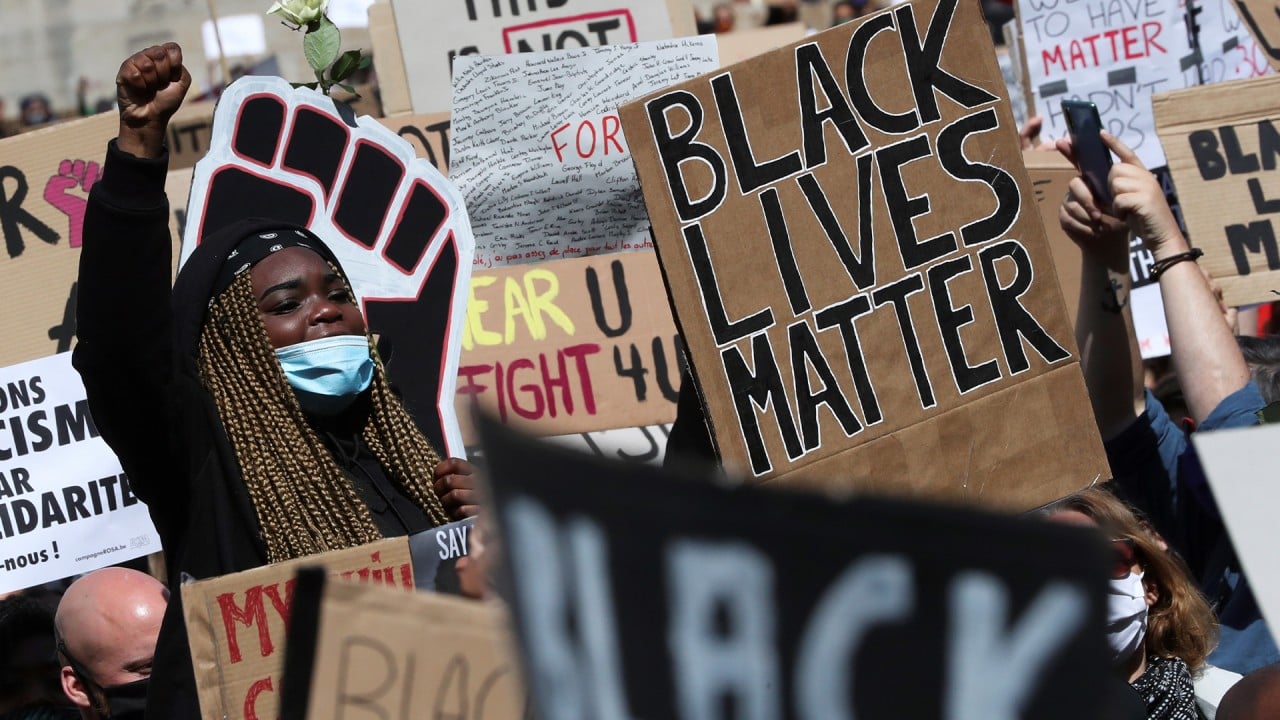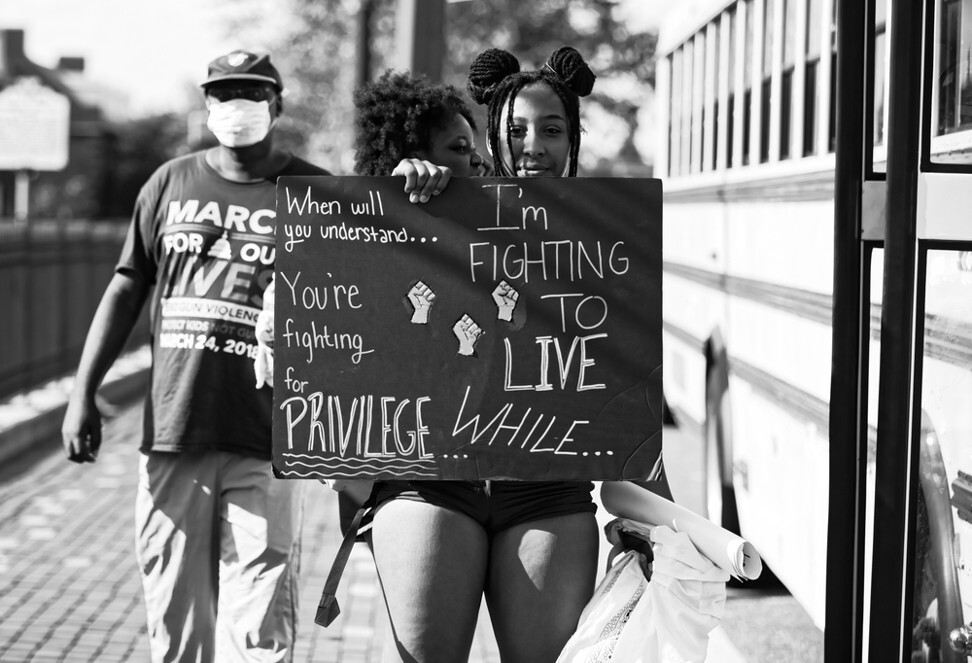
Why the biggest barrier to overcoming racism is ‘white fragility’
- Have you ever told a white person that something they said sounded racist? You’ll likely get a defensive outrage in response and claims of the opposite
- This ‘white fragility’, a term coined by author Robin DiAngelo in her bestselling book of the same title, causes untold damage to people of colour
It took a nine-minute video of a white man kneeling on a black man’s neck, effectively murdering him, for America to collectively admit that racism is a serious issue in the country.
While the persistence of racism is obvious to many, especially those who experience it, for others the situation may have seemed to be “getting better” – perhaps until now. The ability to capture proof of blatant discrimination on video, and subsequently share it on social media, makes it impossible to deny the scale of the problem.
Once it’s visible and thrust in your face, you can’t deny it. If you do, you’re perpetrating it, especially if you’re white, says Dr Robin DiAngelo, a white American woman, former “diversity trainer” and an associate professor of education at the University of Washington in Seattle.
With clarity and frankness, DiAngelo deconstructs the concept of white privilege and how it allows systemic racism to persist in her bestselling book White Fragility, published in 2018.

You might have seen this title listed in one of the many articles now being circulated recommending books about the history of racism and white privilege. While there are an overwhelming number of books on the topic, this one was written specifically for a progressive white audience, which DiAngelo defines as “any white person who thinks he or she is not racist, or is less racist, or already ‘gets it’.”
She describes a number of people we possibly encounter on a daily basis, and perhaps even a few reading this article.
She believes “white progressives” cause the most damage to people of colour because they are so focused on projecting their own image as being “not racist” instead of educating themselves and actively practising anti-racism. US author Ibram X. Kendi notes in his book How to be an Anti-Racist that “the opposite of racist isn’t ‘not racist’. It’s anti-racist.”

Have you ever told someone that something they said sounded racist? The first response you receive is usually defensive outrage and the statement: “I’m not a racist.”
This is what DiAngelo has termed “white fragility”, attributing the feeling to one’s moral character being challenged. But by denying your complicity, not only are you dismissing the experiences of victims of systemic racism, you’re dismissing the concept itself and upholding the system.
Many observers – including DiAngelo – believe racism is a “white problem”. She states that her book doesn’t serve as a solution to racism, but “makes visible how one aspect of white sensibility continues to hold racism in place: white fragility”.
Racism at all levels – from blatant acts of discrimination to microaggressive social interactions – occur in Hong Kong on a daily basis
DiAngelo dismantles arguments that prevent the issue of racism from being solved, such as the myth and invalidity of “reverse racism”, and the inherent discrimination of “colour blindness”, among others. Most importantly, she shows how change starts with the individual.
She highlights the power of acknowledgement as a critical first step in the battle to end racism and reform the systems that enable it. It’s a simple but often overlooked act. You can only solve a problem when you acknowledge it exists.
Why is this relevant now? The current climate in the US and the world at large allows for an honest and in-depth examination of why racism still affects every functioning political, economic and social system, and how this can change.

03:30
Black Lives Matter protests sweep the globe after police killing of George Floyd in US
And if you think the concept of “white fragility” only applies to Americans in an American context, think again. DiAngelo points out that it is also relevant in Western countries with a history of colonisation, as well as in countries that have experienced colonisation – their current governments have in some form (or in direct reaction to) descended from colonial ones.
After all, racial superiority – and therefore moral superiority – was one of the justifications for colonialism.

This anti-black mentality is not exclusive to Western countries. From South Korea to India, the mentality of “the whiter the better, the darker the scarier” is embedded in standards of beauty.
In India, Bollywood celebrities support Black Lives Matter on social media because it’s the trendy thing to do, while simultaneously endorsing skin-whitening (now termed “brightening”) products.
In Singapore, it seems black (or more accurately brown) lives certainly do not matter, given the living and working conditions migrant workers are subjected to.
Hong Kong also exhibits symptoms of white privilege and anti-black sentiment. As one of the most socially complex and racially diverse cities in Asia, racism at all levels – from blatant acts of discrimination to microaggressive social interactions – occur here on a daily basis.
Maybe it isn’t as bad as it is in America, but if that’s our benchmark, then we have bigger problems than we think.

The intensity with which the Black Lives Matter movement has gained traction shows that awareness and active participation are no longer mere suggestions, but requirements.
White Fragility is a recommended – even mandatory – read for those who wish to better understand how they, and others, are complicit in upholding systemic racism, and how they can begin to change.
Aaina Bhargava is a reporter on the Post’s Culture desk

